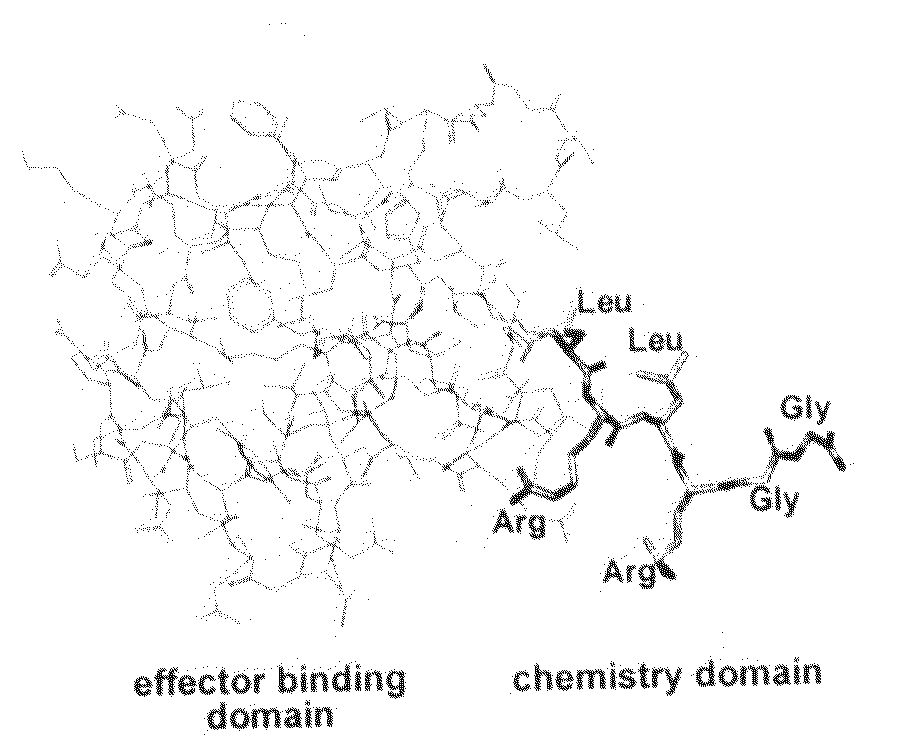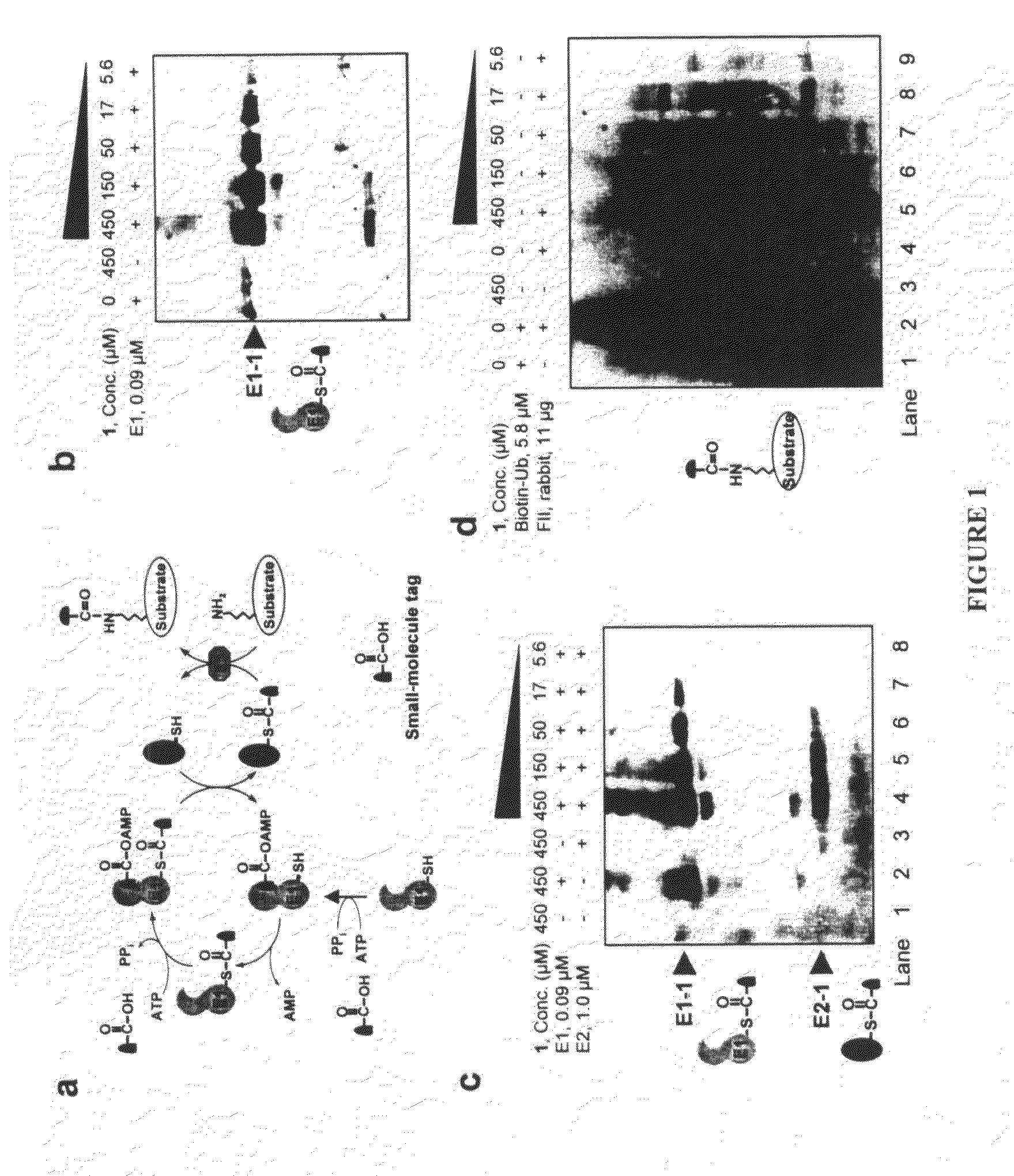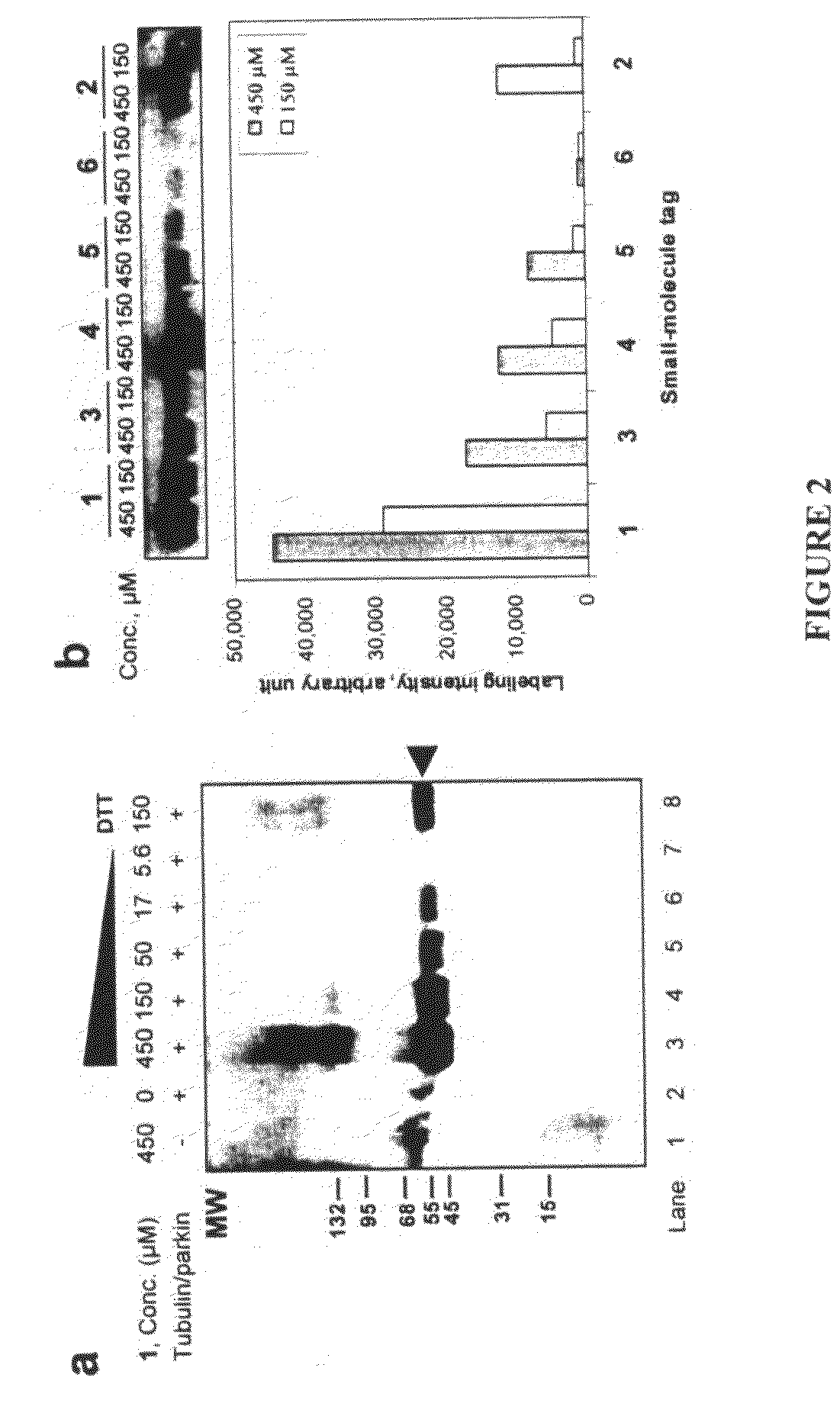Biochemical method for specific protein labeling
a biochemical method and protein technology, applied in the field of protein labeling, can solve the problems of general strategy that can apply to unmodified, lack of native proteins across a wide range of protein families, and inability to confer selectivity among identical amino acid residues, etc., to achieve the effect of facilitating the functional annotation of a protein
- Summary
- Abstract
- Description
- Claims
- Application Information
AI Technical Summary
Benefits of technology
Problems solved by technology
Method used
Image
Examples
Embodiment Construction
[0030]SEQ ID NO: 1 is the peptide sequence Leu1 Arg2 Leu3 Arg4 Gly5 Gly6.
[0031]SEQ ID NO: 2 is the peptide sequence Leu1 Ala2 Leu3 Arg4 Gly5 Gly6.
[0032]SEQ ID NO: 3 is the peptide sequence Arg1 Leu2 Arg3 Gly4 Gly5.
[0033]SEQ ID NO: 4 is the peptide sequence Leu1 Arg2 Gly3 Gly4.
[0034]SEQ ID NO: 5 is the peptide sequence Arg1 Gly2 Gly3.
[0035]SEQ ID NO: 6 is the peptide sequence Gly1 Gly2.
DESCRIPTION OF THE PREFERRED EMBODIMENTS
[0036]An important lesson can be learned from Nature on how protein posttranslational modifications are carried out in living cells. While most cellular protein modifications, such as phosphorylation, acetylation, glycosylation, methylation, and nitrosylation, are carried out by specific classes of enzymes, protein ubiquitination appears to be a more wide-spread posttranslational modification in eukaryotic proteomes, e.g., 1075 ubiquitinated proteins were identified among the 6139-membered yeast proteome (Peng et al., Nat Biotechnol 2003, 21, 921-6). In the ubiqu...
PUM
| Property | Measurement | Unit |
|---|---|---|
| Temperature | aaaaa | aaaaa |
| Length | aaaaa | aaaaa |
| Length | aaaaa | aaaaa |
Abstract
Description
Claims
Application Information
 Login to View More
Login to View More - R&D
- Intellectual Property
- Life Sciences
- Materials
- Tech Scout
- Unparalleled Data Quality
- Higher Quality Content
- 60% Fewer Hallucinations
Browse by: Latest US Patents, China's latest patents, Technical Efficacy Thesaurus, Application Domain, Technology Topic, Popular Technical Reports.
© 2025 PatSnap. All rights reserved.Legal|Privacy policy|Modern Slavery Act Transparency Statement|Sitemap|About US| Contact US: help@patsnap.com



